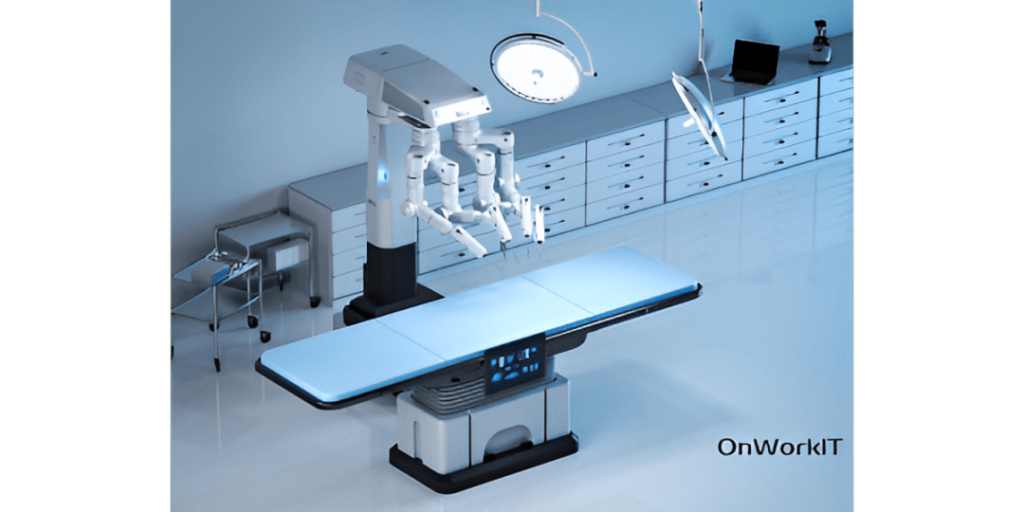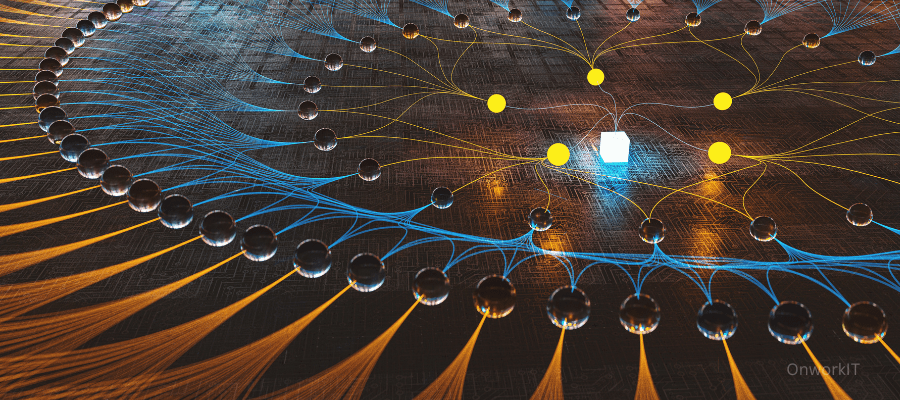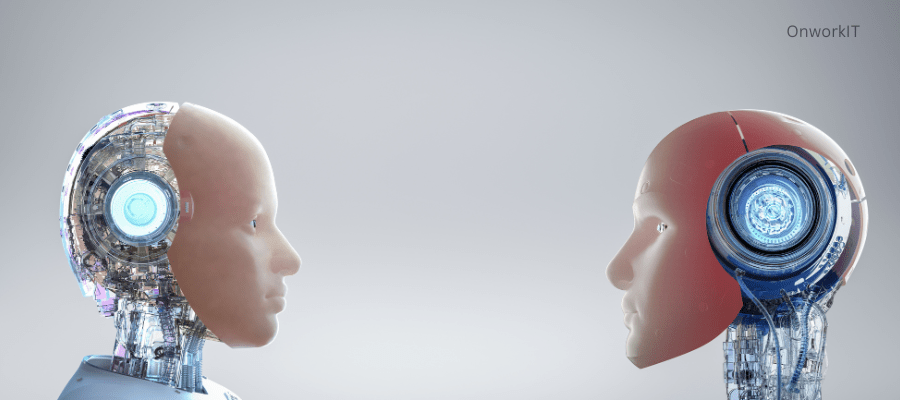Raditional humanoid robots have typically been covered with silicone rubber to simulate soft human-like skin. However, these robots lack human-like abilities such as self-repair, sensing, and heat dissipation (sweating). As Robots increasingly replace human tasks, there remains a challenge in achieving these human-like capabilities with silicone rubber, Now Scientists attach living skin to robots to make them original.
In this study, the research team utilized “cultured skin,” which is created by culturing human skin cells externally, as a covering material for robots. This allowed them to successfully create the world’s first biohybrid robot in a finger shape, equipped with skin possessing human-like functions including repair capabilities.
The technology of cultured skin developed in this study, which is a key element in creating robots with cultured skin, is expected to be utilized not only as a covering material for future humanoid robots but also in fields such as prosthetics, cosmetics and pharmaceuticals targeting skin, and regenerative medicine for transplantation materials..
Key Points
- Successfully created a finger-shaped robot covered with cultured skin.
- Revealed a method to produce cultured skin capable of covering three-dimensional objects.
- Demonstrated that cuts made on the created skin can be repaired by applying collagen sheets.
Development
The development of AI technology has expanded the range of tasks that robots can undertake. Previously confined to repetitive tasks in closed factories, robots now appear in our living spaces in forms resembling humans, performing various services. In a society where the future is unpredictable, robots are expected to collaborate with humans and other robots, necessitating soft outer coverings like skin to protect against contact. Furthermore, such soft coverings are prone to minor cuts, making self-repair capabilities essential. Neglecting small wounds from contact with the surrounding environment can lead to larger tears, and repairing these wounds every time a robot is damaged incurs significant costs.
Research
In this study, researchers cultured and multiplied cells isolated from human skin to create “cultured skin,” which they used to cover three-dimensional objects and produce the world’s first robot wrapped in living skin. Outlines the method used to create robots covered with cultured skin, the skeleton of the robot consists of a finger-like shape with three joints, operated by motors pulling wires through its center to enable joint movement. Gelifying dermal tissue around the finger-shaped robot causes intense contraction, forming cultured skin that tightly covers the robot. Subsequently, seeding epidermal cells on the surface of the cultured dermal tissue and continuing cultivation forms the epidermal layer, resulting in cultured skin tissue.
The finger-shaped robot can perform joint movements without damaging the formed cultured skin, confirming the presence of a water-repellent epidermal layer on the surface. Moreover, the cultured dermal tissue covering the finger-shaped robot can be repaired by applying collagen sheets to wounds. This study confirmed that collagen sheets applied to incisions made with a scalpel allow dermal cells to migrate to the collagen sheet over seven days of cultivation, enhancing the adhesive strength of the wound closure. Repaired finger-shaped robots can resume joint movements, demonstrating integrated healing of the wound site.
The fabrication technology for cultured skin robots developed in this study is expected to be applied not only in industries leveraging repairability and human-like characteristics but also in the development of cosmetics and pharmaceuticals targeting skin, and in the field of regenerative medicine for transplantation materials.
Glossary
Cultured skin
Cultured skin tissue created by culturing and multiplying skin cells from humans or other animals outside the body. Traditionally used in skin research, as a model for testing cosmetics and pharmaceuticals, and as transplant material for severe burns and wounds. It consists of two layers: a “dermal layer” made of dermal cells and collagen, similar to skin in the body, and an “epidermal layer” with barrier functions that maintain moisture and prevent harmful substances from passing through.
Biohybrid robot
A Biohybrid robot incorporating biological tissues such as muscles, skin, and sensory tissues as materials. It is expected to be applied in industries benefiting from its operational efficiency, repair capabilities, and high-sensitivity identification abilities. Additionally, it holds promise in the development of pharmaceuticals, food, cosmetics, and applications in the field of transplant medicine.
Here is a simplified description of the figures:
Figure 1:
- Design of the finger-shaped robot.
- Method to form cultured skin covering the robot. By culturing collagen solution containing dermal cells, which contracts intensely, cultured dermal tissue is formed. This property is utilized to create cultured skin tissue that snugly covers the finger-shaped robot.
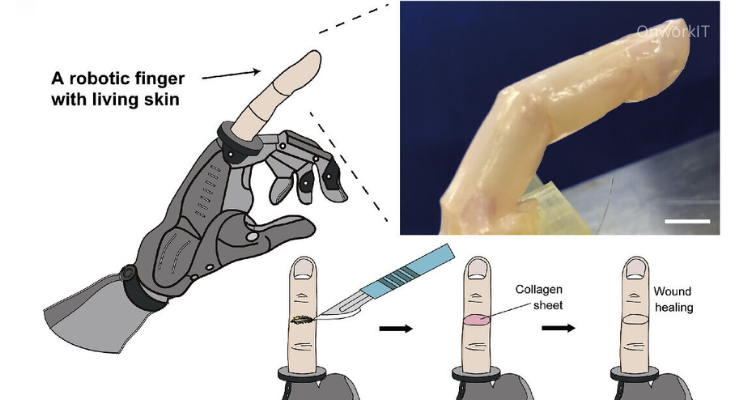
Figure 2:
- Joint movement of the finger-shaped robot covered with cultured skin. The created robot can perform joint movements without damaging the skin.
- Confirmation of the epidermal tissue.
- Confirmation of the water-repellent property characteristic of the epidermal tissue.
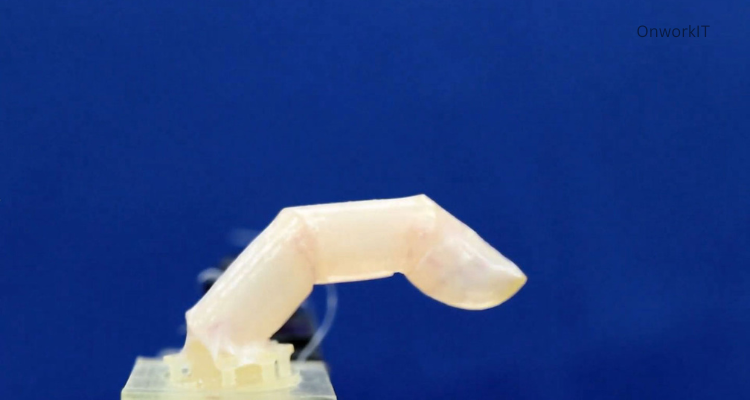
These figures illustrate the process and characteristics of using cultured skin to cover and enable functional movements in a robotic framework.
